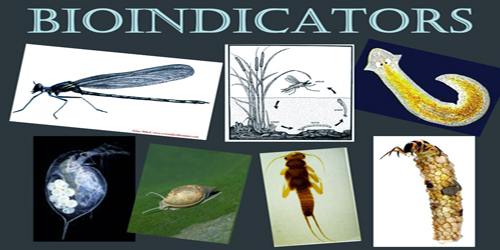A bioindicator is a living organism that gives us an idea of the health of an ecosystem. Some organisms are very sensitive to pollution in their environment, so if pollutants are present, the organism may change their morphology or behavior or it may die. It is a plant or animal species known to be particularly tolerant or sensitive to pollution. For example, copepods and other small water crustaceans present in many aquifers can be observed for changes (biochemical, physiological or behavioral) that may indicate a problem in their ecosystem. Bioindicators can tell us about the accumulated effects of various pollutants in our ecosystem, and how long a problem may be, which cannot be physically and chemically tested.
The use of individual species or a community structure as a bioindicator involves identifying, classifying, and quantifying the biota in the affected area. A biological monitor or biomonitor is an organism that provides quantitative information about the quality of the environment around it. While many species are in use, the most commonly used biological communities are benthic macroinvertebrates. These are poly and crawling pork worms and pork larvae that live in sediments below aquatic systems like lakes and rivers. Thus, a good biomonitor will indicate the presence of a contaminant and can also be used in an attempt to provide additional information about the amount and severity of the exposure.
Bioindicators are used to detect specific physiological and behavioral changes in environmental health. Indices or pointer species, so-called “biomonitors” and test organisms (such as BICK 1982) in the broadest sense, are sufficiently understood, but the effects of biotope change, climate change and, in some cases, pollution on ecological index species can also be determined. Biomonitors are organisms that accumulate certain toxins in specific environments during different periods of time (plants) or at different locations (mobile animals), possibly depositing them in their tissues. Instead of simply acting as a gauge of natural change, taxis are used to show the effects of natural surrounding changes or environmental changes. They can detect changes in the environment due to the presence of environmental pollutants that can affect the biodiversity of the environment, as well as the species present in it (Walsh 1978; Peterson 1986; Gerhard 2002; Holt & Miller 2010). Experts use passive methods to monitor the growth of plants naturally in their area of interest. In the study area, active methods were used to detect the presence of air pollutants by establishing known reactions and experimental plants of the genotype.
In the environmental field, bioindicators are commonly used in field investigations of contaminated sites to document biological entities and their impact on the ecosystem. These studies are then followed up with focused laboratories to determine the source of toxicity or stress. Biological indicators can be described as the role of a highly resistant microorganism in a specific environment prior to sterilization, to test the effectiveness of disinfection processes. Since biological indices use highly resistant microorganisms, any bactericidal process that inactivates them kills more common, vulnerable pathogens.















